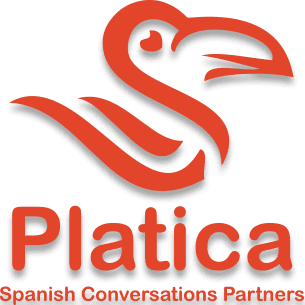As there are many ways to learn a language, there are also different stages. Usually, it’s best to start with the basics and grow into more complex lessons like practicing actual Spanish conversation, this is just common sense. That is the way any language learning program works. That is also the way every kind of learning works. Either if it is a sport, a job or any form of acquiring knowledge and developing technical skills.
Nowadays (for a couple of decades now), Internet access and computer technology have given us a wide variety of ways of learning. And language learning is not an exemption. Different apps, such as Duolingo, have revolutionized the way we can start learning a language. Taking the very reliable technique of gamification and applying it to virtual language learning, they have made language education accessible all around the globe.
Getting a head start
Interactive learning apps, like Duolingo, are a great way to start. Their short lessons are well structured, dropping snippets of knowledge and rules in an easy way. It’s a fantastic way to get a sense of the language, to savor the words and train your ears to pick up its sounds. It helps build up a vocabulary in a very basic way.
However, as lessons get more complex you begin to outgrow the system. Your questions and doubts get a bit more complicated and those snippets of rules become less useful. That’s when you need to start looking for other tools for learning. And that’s what we are here for, for when you wonder what to do next.
 Outgrowing learning apps. What to do next?
Outgrowing learning apps. What to do next?
Now that the Spanish learning app, such as Duolingo, has given you the basic skills, you need to dive deeper. Language learning is usually measured in two ways, technical knowledge and practical knowledge. Technical knowledge is how much you know about the rules. Practical knowledge is about how you use what you know. They work hand in hand, but the secret about practice is that it can teach you technical aspects in a more intuitive way.
Think about the way you use your native language. You don’t consider grammatical structure as you speak or write naturally. It just flows. For some tricky cases you may remember the rules, but for most you just know. Things sound right or wrong. This is what practical knowledge does. And you pick it up by practice: by using it every day, hearing it every day, and reading it every day.
So, as it may be obvious by now, the next step is to expose yourself to the language on a deeper level. Here are some ideas on what to do:
Reading and watching
Pick up a book, a magazine or follow a blog. Just try to keep it around your level of comprehension. If you find it too complex, look out for something simpler. Try literature for children, or maybe for youths, or maybe mix it up with an audiobook. There are also some sites that show you the text and add the audio for you to follow the reading (this one, for example; although this may be quite boring). Either way, you should keep a Spanish/English dictionary at hand, and don’t let new words slip away.
Social media posts tend to be quite simple, fun and accessible. Dive into native Spanish speaking influencers, for example. Listen to them, read their posts, write to them. But beware, they may not be the most reliable source for technical rules, yet they will help you develop your comprehension.
Movies and TV shows are another great way to practice. Play with the language options. Set the captions to Spanish or set the audio to Spanish and keep the captions in English to follow the story and match what you hear. Or if you are feeling ready, set it all to Spanish, both audio and captions. These tools are available in most streaming services. Try it out!
And also, if you like to sing, try out some karaoke. Youtube has a huge library of songs in Spanish you can sing along to, or follow the lyrics for the songs on Spotify.
Experience it
Do you know if there is a Spanish speaking community near you? Maybe a restaurant. Try to get a hold of real world language, pick up a conversation on the street or with a neighbor.
If you have a more adventurous heart, travel to a Spanish speaking country and immerse yourself in the language. This hardcore exposure may be a little bit harsh, but it is very effective. It will force you to use as much as you know. Conversation is the key.
You can also join our Spanish Conversation Program and talk with native Spanish speakers. This is a great way because it gives you the flexibility and confidence to talk with someone experienced in teaching the language. A certified teacher is ready to answer your questions and give you real life tips on mastering it. They are knowledgeable on the rules and will help you clear your doubts and fix your mistakes, all in a natural, professional and friendly conversation.
Boost up your confidence, tighten up your skills and get ready to explore the world!
Join our Spanish conversation program here.
